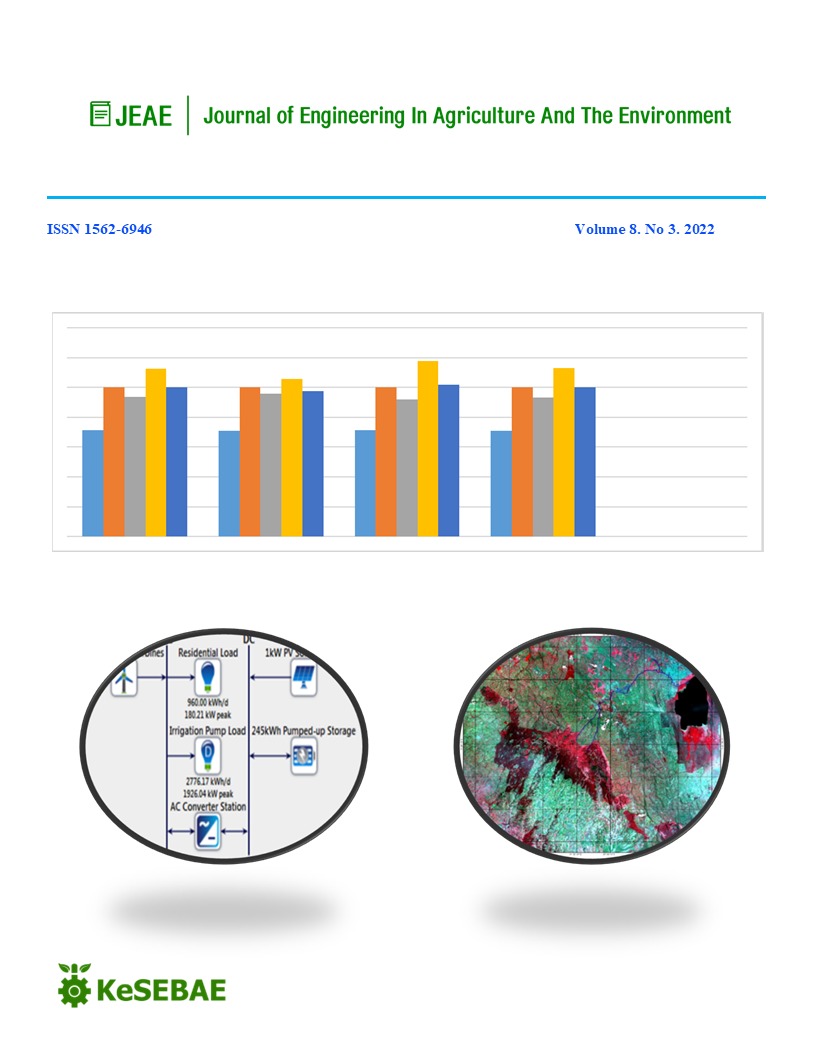Abstract
Ruiru, a town within the metropolitan area of Nairobi Kenya, has experienced rapid urbanization which has generated a lot of challenges and problems – economically, socially, and environmentally The Purpose of this research was to study the impact of mega infrastructure on the hydrology of Ruiru and Kamiti rivers. The catchment area was defined by River gauging station (RGS) 3BB12 on River Kamiti and delineated using the RGS as the catchment outlet and was based on SRTM void filled Digital Elevation Model (DEM). Data sets utilized in the study were landsat images, google earth images, river flow data obtained from from water resources authorities (WRA), river abstraction records, water production data and rainfall data. Various GIS methods employed to analyze the data included normalized difference built up index (NDBI), hydrological characterization using the threshold method, change detection, and GIS software (ILWIS and Grass GIS). The supervised classification built up index for the study area increased from 2.8% to 51.8% for the period under study. The mean flows over this period decreased from 2.2m3/s to 0.53m3/s. This indicated that there was a definite effect of change in land use to the river flow regime. However, to conclude that mega projects had a separate effect to ‘normal’ urban development would not have been correct. This is because the flow duration curves for the different periods (1958-1987, 1988-2000, 2005-2010, 2011-2016) showed a similar pattern with no abnormal changes seen in the previous 10-15 years. It is therefore recommended that developmental control be enforced. This will assist in mitigating against the negative effects of land use conversion. The present development control authorities need to be strengthened to enforce development control. The zoning guidelines and planning regulations form the basis for developmental control and should be enforced.
References
Amoros, C., and Roux, A.L. (1988). Interaction between water bodies within the floodplain of large rivers: function and development of connectivity. Munstersche Geographische Arbeiten 29, 125–130.
Baker, T.J., and Miller S.N. (2013). “Using the Soil and Water Assessment Tool (SWAT) to assess land use impact on water resources in an East African watershed.” J. Hydrol. Vol. 486, 100–111.
Codjoe, S. N. A., (2007). Integrating Remote Sensing, GIS, Census, and Socioeconomic Data in Studying the Population–Land Use/Cover Nexus in Ghana: A Literature Update." Africa Development. 32 (2): 197–212
Dingman, S. Lawrence, Physical Hydrology, Prentice-Hall, 2nd Edition, 2002.
Ferreyra, C., and Beard, P. (2007). Participatory Evaluation of Collaborative and Integrated Water Management: Insights from the Field. Journal of Environmental Planning and Management. 50(2): 271-296.
Geofrey Mwangi Wambugu, (2018) Spatio-Temporal Dynamics of Land Use Change on Rivers in Tropical Watersheds: A Case Study of Ruiru and Ndarugu Basins, Kiambu County, Kenya.
John Mwangi Gitau, (2018). Analysis of Land use Land cover change and its implication on Peri-Urban Agriculture: Case Study; Kiambu Sub-County in Kiambu County, Kenya
Kenya National Bureau of Statistics-KNBS. (2019). Kenya National Population and Housing census. KNBS, 2019.
Kibichii, S., Shivoga, W.A., Muchiri, M., and Miller, S.N. (2007). Macro invertebrate assemblages along a land-use gradient in the upper River Njoro watershed of Lake Nakuru drainage basin, Kenya. Lakes and Reservoirs: Research and Management
Kithiia, S.M. (1997). Land use changes and their effects on sediment transport and soil erosion within the Athi drainage basin, Kenya. In: Human Impact on Erosion and Sedimentation (ed., D.E. Walling and J.L, Probst). Proceedings of Rabat Symposium S6, April 1997
Musau, J., Sang, J., Gathenya, J., Luedeling, E., and Home, P.,(2014). SWAT model parameter calibration and uncertainty analysis using the HydroPSO R package in Nzoia Basin, Kenya. Journal of Sustainable Research in Engineering. vol 1. No 3. Pp. 17-29.
Odira, P.M.A., Nyadawa, M.A., Ndwallah, B.A., Juma, N.A., and Obiero, J.P.,(2010). Impact of land use/cover dynamics on streamflow: A case of Nzoia river catchment, Kenya. Nile Basin Water Sci. Eng. J. vol 3, pp. 64–78.
Raburu, P.O., Masese, F.O., and Mulanda, C.A. (2009). Macroinvertebrate Index of Biotic Integrity (M-IBI) for monitoring rivers in the upper catchment of Lake Victoria Basin, Kenya. Aquat Ecos. Health Manage. 12 (2): 1- 9
Thuo, A. D. M. (2013). Impacts of Urbanization on Land Use Planning, Livelihood and Environment in the Nairobi Rural-Urban Fringe, Kenya. International Journal of Scientific and Technology Research, 2(7), 70–79. Retrieved from www.ijstr.org
United Nations (2005). Rio Declaratrion on Environment and Development. Report of the United Nations Conference on Environment and Development. Rio de Janeiro. United Nations Centre for Human Settlements (UNCHS)- UN- Habitat. (2001). The state of the world's cities. Nairobi, Kenya: UN- Habitat

This work is licensed under a Creative Commons Attribution 4.0 International License.
